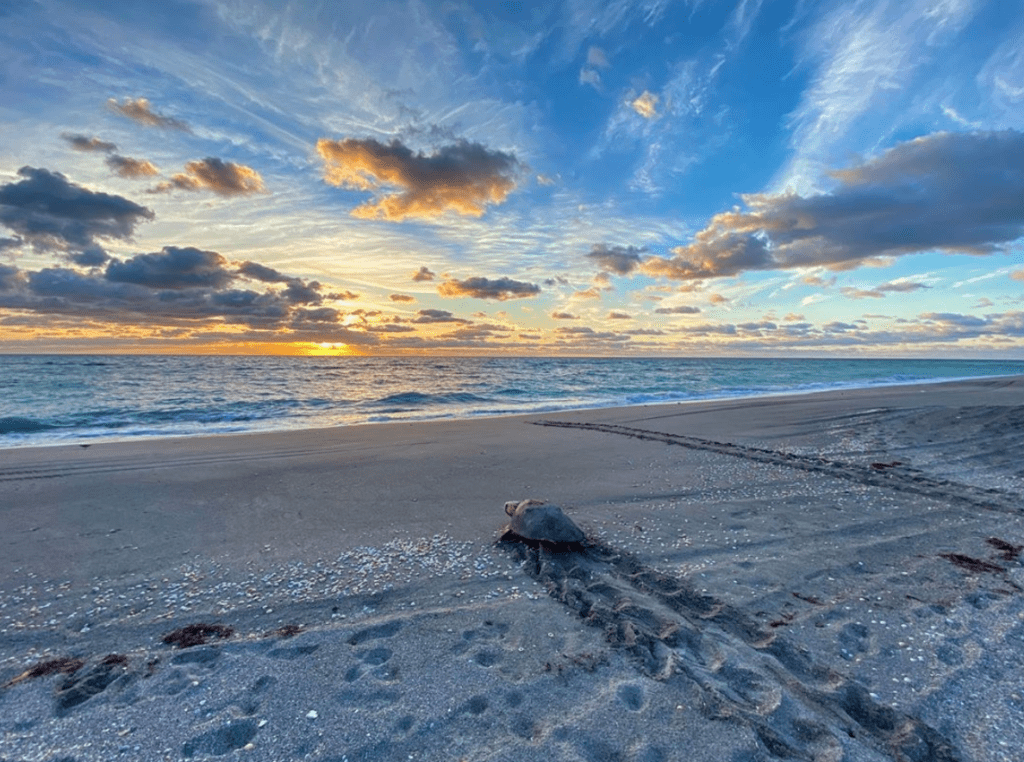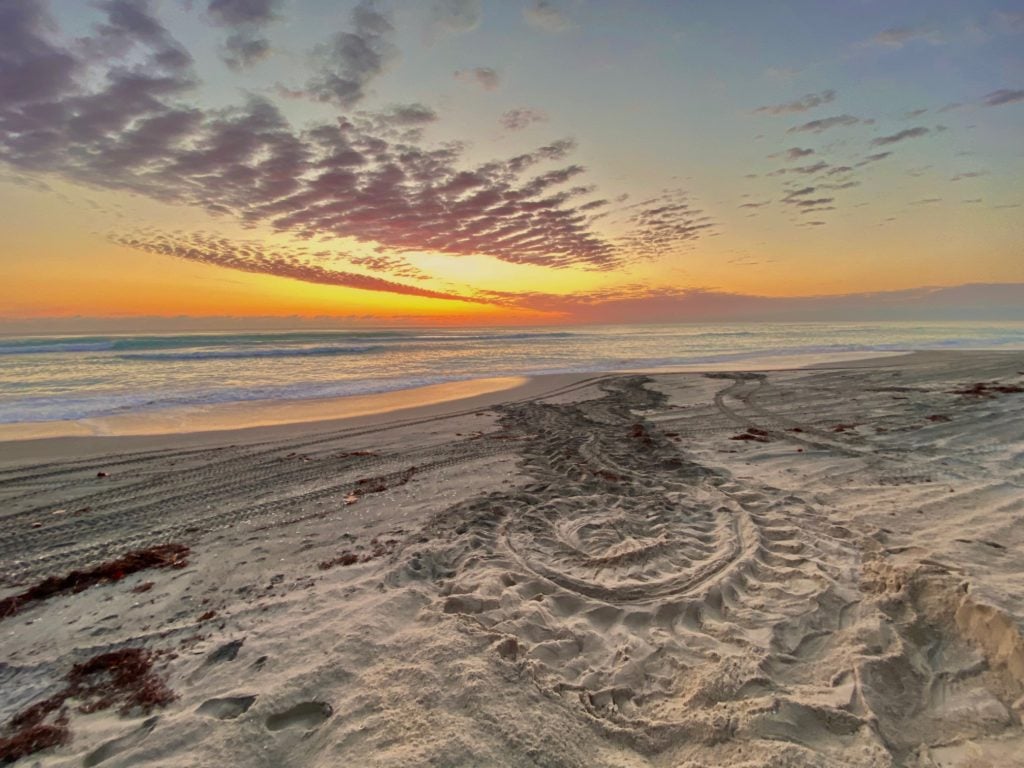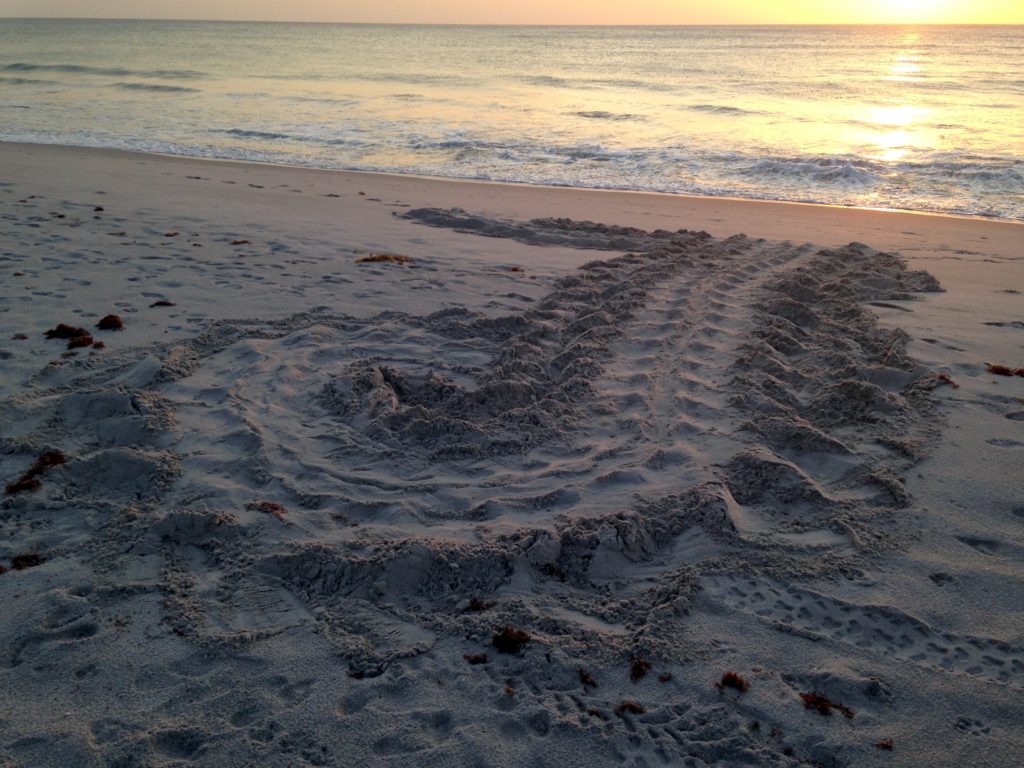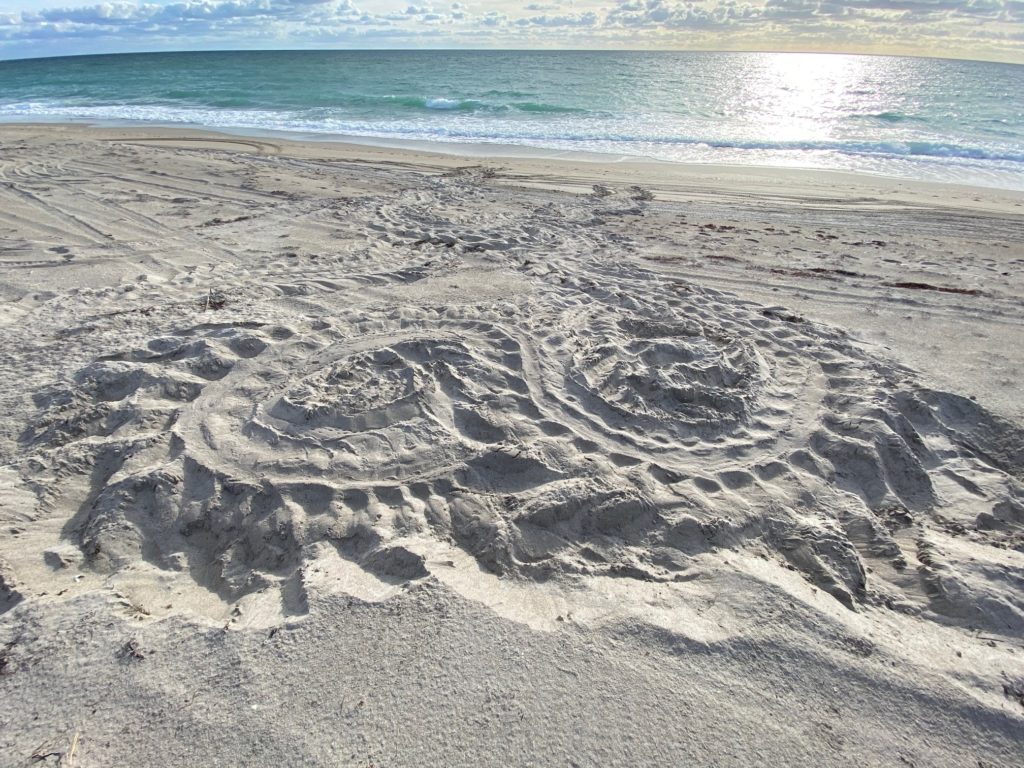
Research Ride Along
A few weeks ago, we participated in a ride along morning survey with Research Operations Manager, Jen Reilly, who happens to be a Deaf biologist. Being Deaf doesn’t impair Reilly’s ability to work in conservation, however it does make her more attune to the fine details of nature. Living in a primarily visual world helps enhance her eye for visualizing and documenting her research.
Within seconds of accompany Reilly on her morning survey patrol, one becomes aware of Reilly’s attention to details – pointing out the various sea turtle tracks in the sand and taking note of how the light bouncing off the water from the early morning sunrise illuminates a nest. During her normal research routine, she takes a few seconds to pause and capture the raw beauty of her work protecting endangered and threatened sea turtles. From documenting the proximity of a balloon fluttering in the sand dunes near loggerhead and leatherback nests to capturing the awe-inspiring moment of a loggerhead returning to the ocean after laying a nest.

Orientation Circles
During our ride along, she took a moment to stop and point out a leatherback orientation circle illuminated by the iridescent sunrise. Orientation circles are the tracks leatherback sea turtles craft in the sand as they crawl on and off the beach during their nesting process. These uniquely patterned tracks can also be formed by hatchlings after emerging from a nest. Reilly notes that “these circles, also known as orientation “loops,” are typically too beautiful not to photograph.”
Standing back behind the leatherbacks tracks, we observed Reilly visually capture the leatherbacks’ mark of nesting. Although nesting season has been hectic due to having a smaller than normal research team, Reilly has been able to collect a handful of orientation loop photographs this season. As nesting season picks up and her surveys extend later into the day, she’s not sure she will have the time to continue photographing these “sand mandalas,” but she hopes she can.

Reilly explains, “orientation loops are evidence of sea-finding behavior in leatherbacks after nesting or emerging. This behavior is similar to a hiker or sailor calibrating the compass on an iPhone to improve the accuracy of their location.” Sea turtles might crawl in a 360 degree before orienting eastward and into the water – leaving behind a perfectly-paralleled track on the beach.
As Reilly captures the simplistic beauty of nature, she provides information on the orientation circles and her work. While these orienting marks may result in returning to the ocean, these tracks can be formed due to a leatherback becoming disorientated as a result of artificial lighting on or near the beach. To ensure a leatherback sea turtle safely makes its journey to the ocean, it’s vital for beach-side residents, visitors and travelers to implement proper nesting season practices, including not using a white light or LED screen light on or near the beach.

Visualizing Nature
After having the opportunity to watch Reilly document her work through photography, we inquired about her passion for documenting her field work. “People often comment that they think my vision has been amplified due to my hearing loss. They might be right, because I have always held a magnified appreciation for the smallest of details,” said Reilly.
It’s no secret that many of the staff and volunteers at Loggerhead Marinelife Center (LMC) have noticed and commented on Reilly’s visual skills and find joy in viewing her photos from her survey. When viewing Reilly’s photos of her morning survey or field work, it’s apparent that she notices the details that many of us often tend to overlook. “I am drawn to the intricate details of orientation loops, which are beautifully crafted by leatherbacks, especially the massive leatherbacks, expressed Reilly.

Lessons From A Leatherback
She continued to describe her fascination with the orientation loops, making note of leatherbacks’ abilities to create near-perfect circles in their nesting tracks and finding their way back into their ocean relying on their inner compasses. “We all can learn a lesson or two from leatherback sea turtles – when we are lost or unsure of which direction to travel in, all we need to do is trust our instincts, said Reilly.”
After completing our ride along with Reilly, we left feeling inspired and reassured these majestic creatures are in good hands. Despite having a busier season than normal, Reilly takes time to derive subtle meaning and lessons from her work and share them with the world.
“Follow your inner compass -it will lead the way for you, often guiding you home,” advised Reilly.

———————–
If you discover a sick, injured or stranded sea turtle, please call Florida Fish and Wildlife Conservation Commission (*FWC) or LMC’s Sea Turtle Stranding Hotline at 561-603-0211.
———————–
One Mission. At Loggerhead Marinelife Center (LMC) we strive to be industry leaders in sea turtle and ocean conservation. Our work is focused on four core pillars, each focused on demonstrating measurable impact. Our team researches and conserves sea turtles, because sea turtles tell us the health of the ocean, which in turn tells us the health of our planet. These critical indicator species serve as our global ambassadors for ocean conservation. In this blog, we invite you to dive into the depths of ocean conservation and explore our research efforts.
Our PhD lead research biologists monitor one of the most densely nested loggerhead sea turtle beaches in the world. Through our comprehensive datasets and innovative studies, we are able to determine threats affecting the health of our sea turtles, oceans and ultimately us. Our research and datasets are invaluable not only to scientists, but also to local, national and international coastal managers. Donate to propel our mission and save sea turtles at: marinelife.org.
———————–
Media Contact:
Lauren Eissey
Public Relations and Engagement Specialist
561-627-8280, x124
